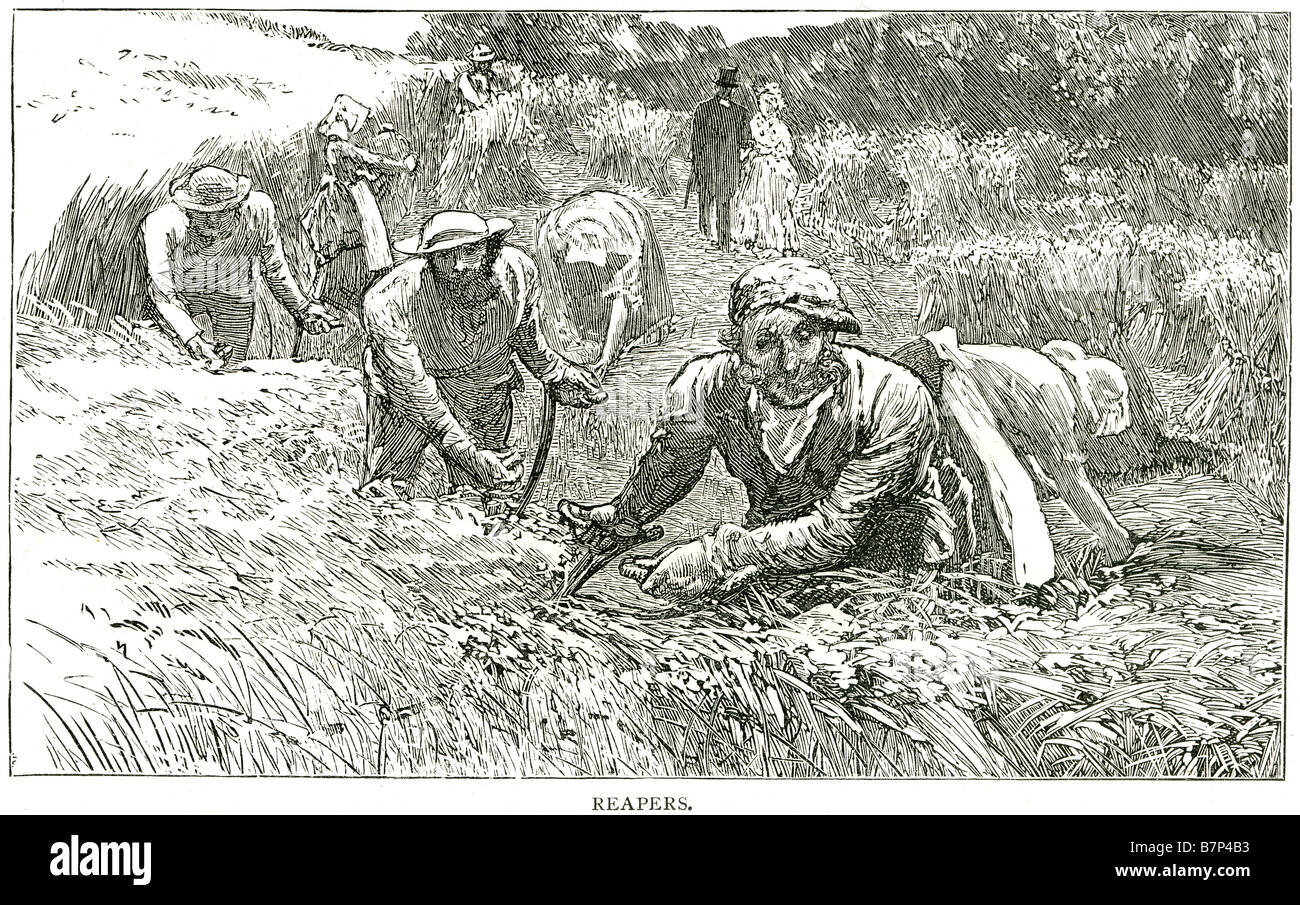reapers scythe farmer farming crop labour straw job work Hand reaping is done by various means, including plucking the ears of g

Image details
Contributor:
19th era / Alamy Stock PhotoImage ID:
B7P4B3File size:
52.7 MB (5.9 MB Compressed download)Releases:
Model - no | Property - noDo I need a release?Dimensions:
5421 x 3399 px | 45.9 x 28.8 cm | 18.1 x 11.3 inches | 300dpiMore information:
Hand reaping is done by various means, including plucking the ears of grain directly by hand, cutting the grain stalks with a sickle, cutting them with a scythe, or with a later type of scythe called a cradle. Reaping is usually distinguished from mowing, which uses similar implements, but is the traditional term for cutting grass for hay, rather than reaping crops. The reaped grain stalks are gathered into sheaves (bunches), tied with string or with a twist of straw. Several sheaves (singular sheaf) are then leant against each other with the ears off the ground to dry out, forming a stook. After drying, the sheaves are gathered from the field and stacked, being placed with the ears inwards, then covered with thatch or a tarpaulin; this is called a stack or rick. In the British Isles a rick of sheaves is traditionally called a corn rick, to distinguish it from a hay rick ("corn" in British English means "grain", not "maize", which is not grown for grain there). Ricks are made in an area inaccessible to livestock, called a rick-yard or stack-yard. The corn-rick is later broken down and the sheaves threshed to separate the grain from the straw. Collecting spilt grain from the field after reaping is called gleaning, and is traditionally done either by hand, or by penning animals such as chickens or pigs onto the field. Hand reaping is now rarely done in industrialised countries, but is still the normal method where machines are unavailable or where access for them is limited (such as on narrow terraces).